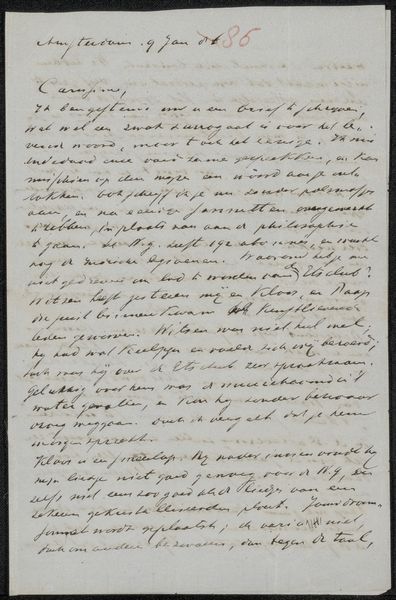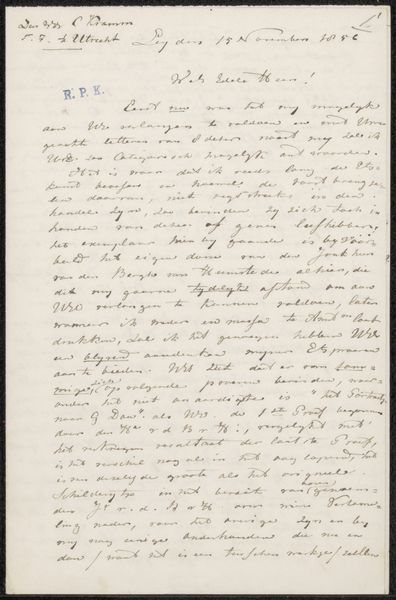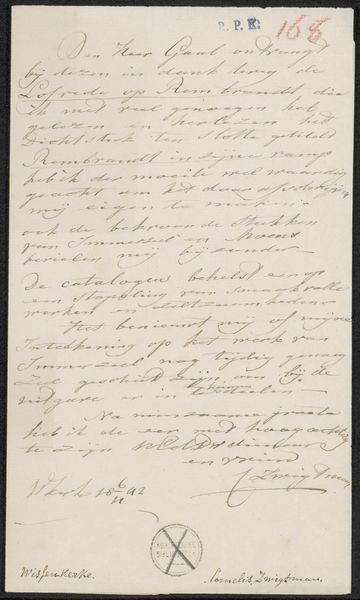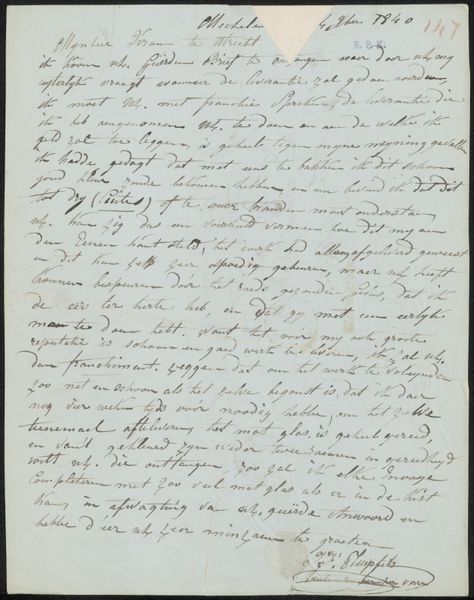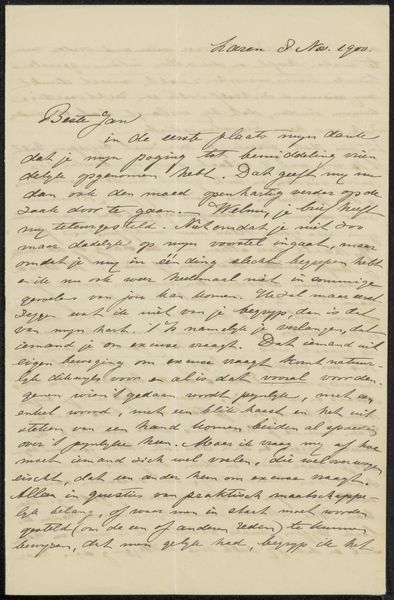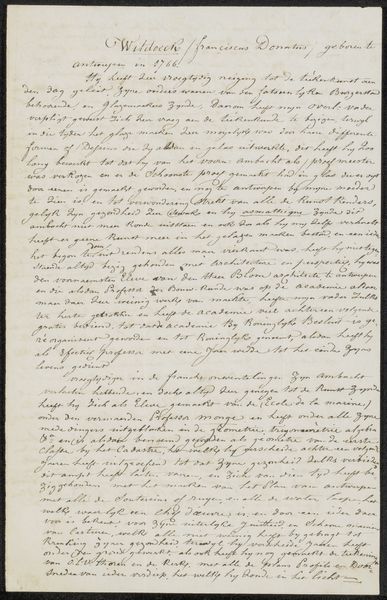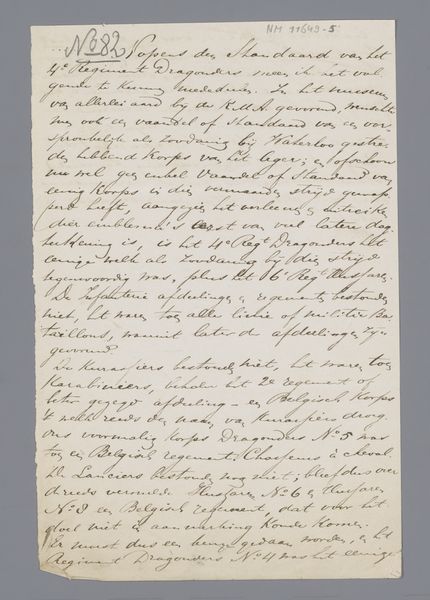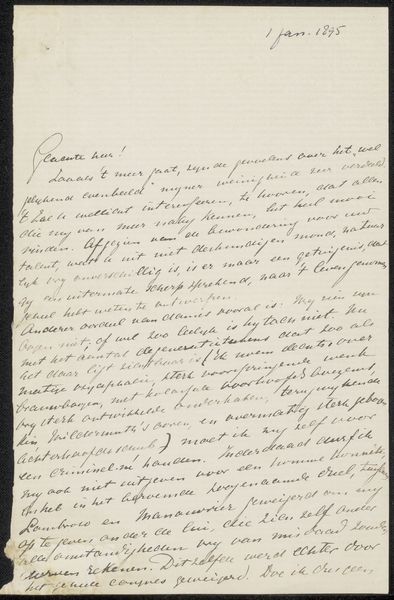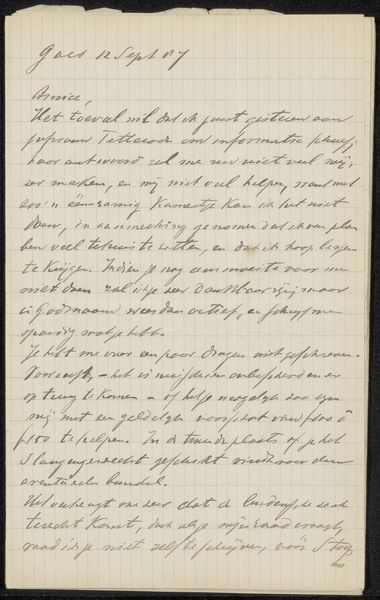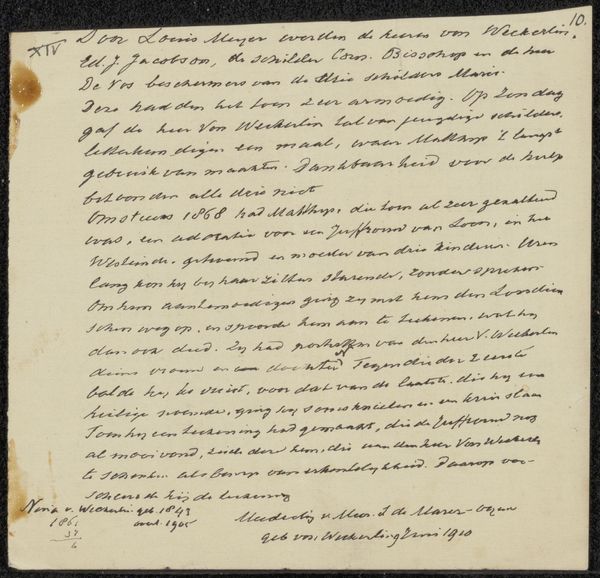
Copyright: Rijks Museum: Open Domain
Editor: Here we have "Brief aan anoniem," or "Letter to Anonymous," a pen and ink drawing on paper, made around 1850 by Johan David Zocher. There’s a personal feel to this piece, almost intimate despite being, well, anonymous. It reminds me of finding a forgotten letter. How would you interpret this work from a historical perspective? Curator: Precisely! Think of this piece not just as personal correspondence, but as a cultural artifact. Zocher's letter gives insight into 19th-century social practices. Letter-writing was crucial for communication and relationship-building before modern technology. Consider, who might be sending letters, and why? What purposes do letters like these serve in this period, given what we know about gender and class? Editor: So, beyond the personal message, it shows us something about how people interacted then. Were letters considered important objects? Curator: Certainly. Letters were often cherished and preserved. They functioned as social records. The very act of handwriting a letter signals intentionality, careful consideration... different than an email today, wouldn’t you say? What kind of person might save or discard such a letter? Does its survival change our reading of it now? Editor: That’s a really interesting point. The fact it survived must give it some importance beyond just the message itself. So, from a historical viewpoint, we're looking at social structures, communication, even the role of personal archives. Thanks! Curator: Indeed. Thinking about what it meant for both sender and receiver at that moment and how our understanding evolves within our own cultural landscape is crucial. Thank you for prompting such a nuanced observation.
Comments
No comments
Be the first to comment and join the conversation on the ultimate creative platform.
